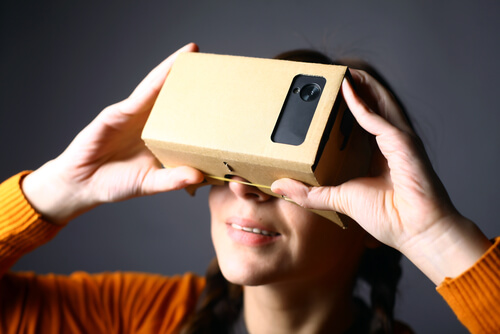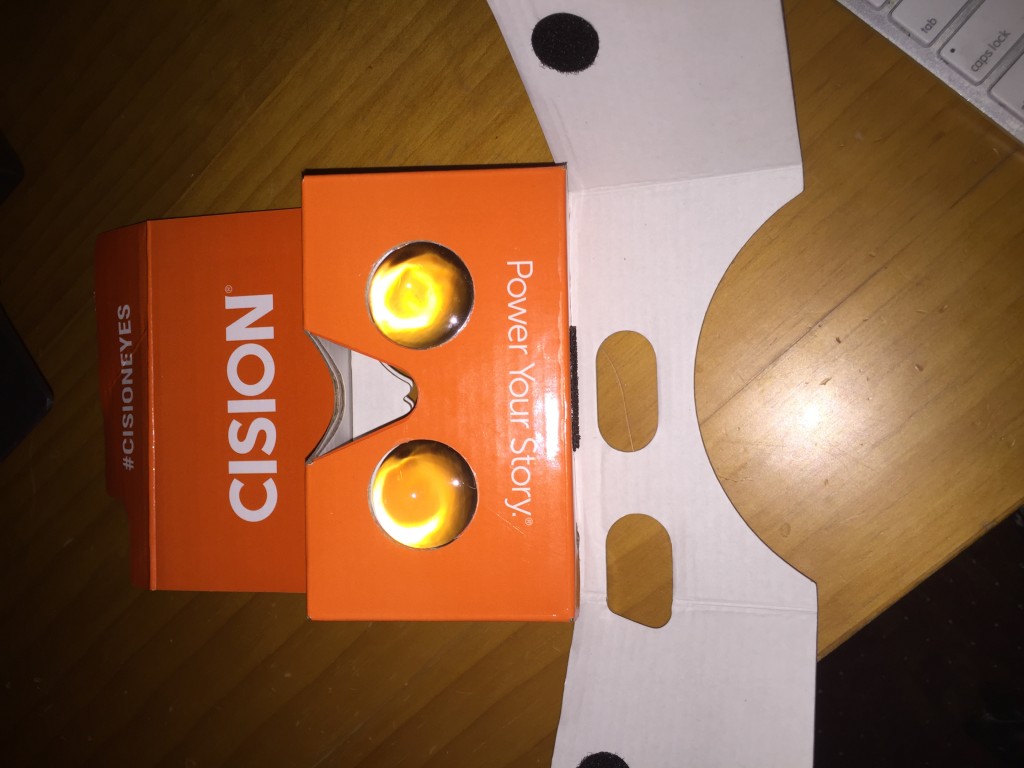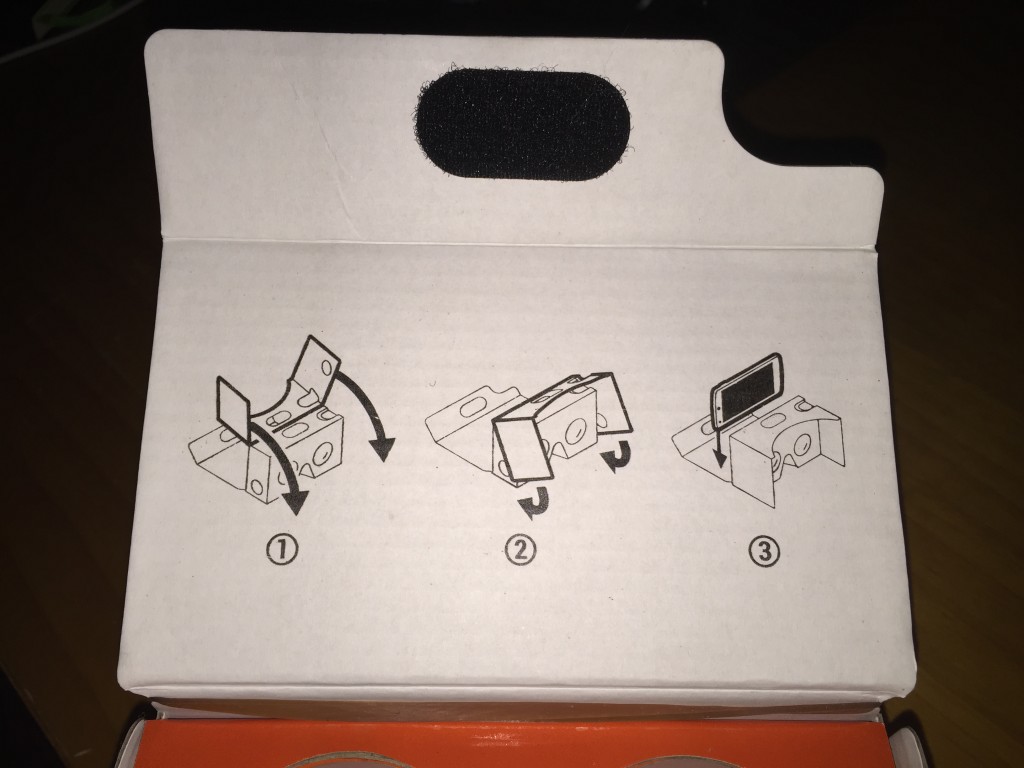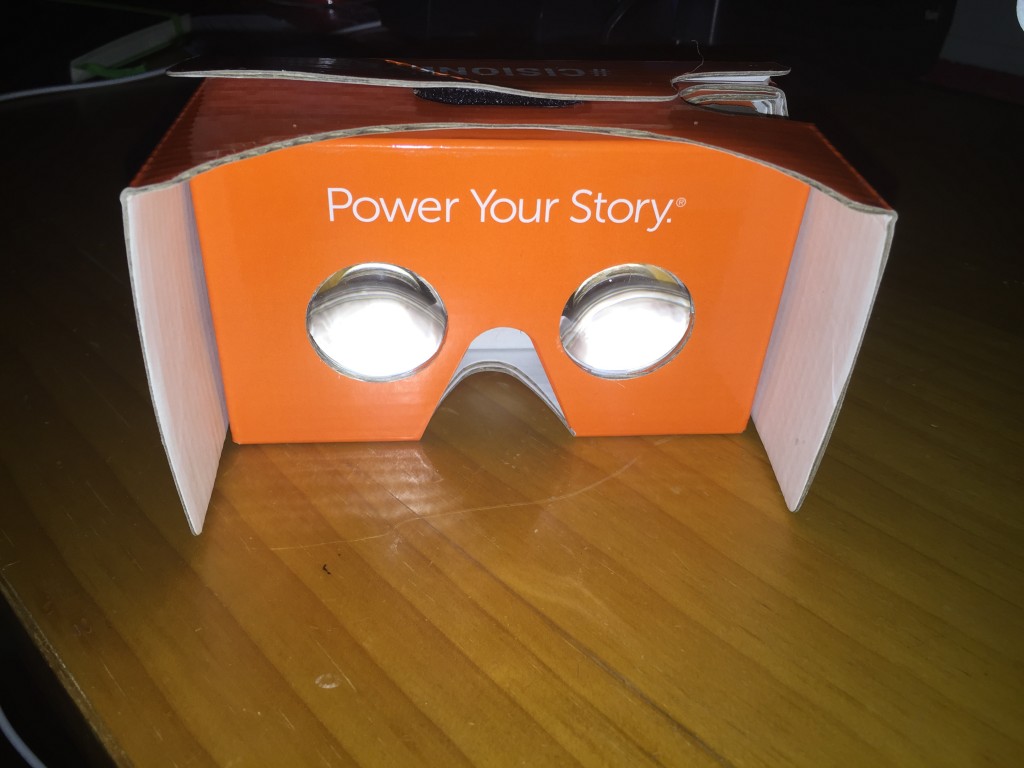Last week, the UPS man arrived with an unexpected package from Cision. I opened it to find—what looked like—a broken view finder. You know, the ones from when we were kids where you inserted the disk and then clicked through the photos? That, but broken.
But I found some instructions on the back side and got to work on putting it together.
Turns out, it’s not a view finder at all, but a virtual reality headset to view VR content.
I let it sit on my desk for a week—because I wasn’t really sure what to do with it—but started playing with it on Friday.
IT IS SO COOL!
What the Heck is VR Content?
VR is virtual reality. It places you in an environment where you can see everything around you in 3D. You don’t see just what the video producer or filmmaker wanted you to see. You can turn your head and see everything around you.
After I realized what Cision sent me wasn’t a fancy view finder, and that I had something in my hands that was pretty stinking cool, I began to do my research.
I first read, How to Get Started with Google Cardboard, and discovered I needed to download the Cardboard app on my phone so I could test out the VR content.
Done!
Then I inserted my phone and began to view. I looked around the jungle, I went inside a museum, I even went under the sea.
(Admittedly, it made me a little motion sick.)
As you turn your head, you can see what’s behind you and what’s to each side of you.
Imagine, if you will, you are checking out the Louvre through VR content. You walk up to the Mona Lisa and check it out, but then turn to your left and see paintings there. Then to your right, and the same thing. Then, you turn around and see a door, which leads you to even more art.
All in one experience. Without leaving your desk or your couch.
What Tools Do I Need to Create VR Content?
Now that you understand there is something here for storytelling and for content, let’s talk about what you need to do to add it to your content marketing plan.
- Get a Google cardboard kit that will allow you to build a VR content headset. You can do like Cision did and brand it for your customers or influencers.
- Download the Cardboard app—and tell anyone you send the VR content headset to to do the same.
- Buy a 360 camera—you can’t shoot VR content without it or without a virtual reality gaming developer.
- Start shooting video!
There are some challenges with creating VR content, of course. A 360 video or photo is not really virtual reality, but it’s the best way to make it easy for all of us to build VR content.
As well, video shoots are totally different. There is no more telling the story the way you want it told by framing the shots and using the best lighting and so on. With VR content, it’s up to the viewer to watch the story as he or she wants. He can look around wherever and whenever he wants, which means the major plot points very well could be missed.
You must reimagine the narrative.
How Do I Create VR Content?
I can see VR content working in so many different ways:
- Let’s say you sell oxidizers, which are as big as two or three football fields. You want to give a behind-the-scenes tour of what it looks like not only to build one, but to travel inside one, as it’s being built. Using your 360 camera, you shoot from all angles and all locations, inside and out. This allows the oxidizer fans to really geek out on something they’d never typically get to see.
- You’re going in for eye surgery to fix a childhood injury. Though the doctor has told you time and time again that it’s no big deal, you’re nervous. It is, after all, your eye. So your doctor tells you to check out their VR content, where they’ve produced video to show you exactly what the surgery is like. But, because you are in control of the narrative, you’re not watching the actual surgery, you’re checking out the operating room, listening to the doctor’s soundtrack, and watching how the team works together.
- Your client is a cranberry grower and it’s harvest time. They are about to flood the fields so the cranberries come off their branches and begin to float. You pull out your 360 camera and shoot video as they flood the field and while the cranberries float to the top. It’s a stunningly beautiful piece that shows consumers a look at how their cranberry juice comes to eventually be.
- You make hot dogs. No, never mind.
- You make chewing gum. No! You make those new Ice Breakers that are not gum and not a mint (I LOVE them). I imagine consumers want to know how the heck they are made, particularly how the process is different than chewing gum or mints. Show them!
I could go on and on. The point here is that, with a $20 cardboard kit from Google, a 360 camera (which isn’t as cheap, but a nice investment), and your imagination, you can begin creating VR content right this second.
What other ideas do you have for creating VR content?
image credit: Shutterstock



